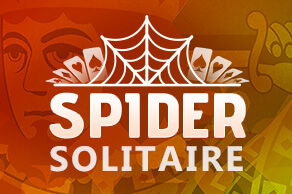By Dario Fo
Translated from the Italian by Antony Shugaar
Europa. 241 pp. Paperback, $17
Writers and entertainers have long found rich fodder in the historical muck of the Borgia clan. Spanish interlopers at the height of the Italian Renaissance — the “original crime family,” as the popular Showtime series describes them — they inspired works by Dumas, Victor Hugo and Rafael Sabatini, among others. Despite all the adultery, bribery, incest, murder and ruthless power-grubbing in the House of Borgia, perhaps no member of the family has excited more salacious gossip than Lucrezia, daughter of Pope Alexander VI and Renaissance Italy’s favored villainess. An alleged poisoner of husbands said to have conducted incestuous affairs with father and brother both, Lucrezia had a dubious reputation as early as the 17th century in John Ford’s tragedy “’Tis Pity She’s a Whore.”
According to the new novel by Nobel laureate Dario Fo, however, this is nothing but “creative embroidery in the fine art of scandalmongering.” Making his novel debut at the lively age of 89, Fo’s “The Pope’s Daughter” offers a studied reconsideration of Lucrezia’s life, swerving dramatically from accounts of her as “a monster, a poisoner, and a prostitute.” Here, instead, she is a devoted wife and daughter, lover of culture and patron of the poor and downtrodden. Not just a pawn or sacrificial lamb, she’s a keen political mind in her own right, able to maneuver with the best (and worst) of the men.
[Why did the U.S. deny visas to Dario Fo and his wife in 1983?]
The Borgias’ political machinations provide an undoubtedly grotesque spectacle, a fine subject for the dell’arte all’improvviso, which has long been a creative touchstone of Fo’s. A controversial choice for the 1997 Nobel Prize in Literature, the Italian has been called the “people’s court jester,” taking his cues as an actor, playwright, comedian and director from the tradition of the Italian giullare, an itinerant medieval performer whose antics gave the exploited a voice. Fo has used the tradition to target the hypocrisies of his own time, lampooning Forza Italia and the Vatican through solo performances such as “Mistero Buffo” or political farces like “Can’t Pay? Won’t Pay!” His Nobel itself was seen by some as a satirical commentary on the part of the Swedish Academy.
[Read Dario Fo’s Nobel lecture]
But Fo is considerably more restrained in “The Pope’s Daughter” than he’s been in the past, and consequently less vivid, as though his concern for Lucrezia’s redemption outweighed his own impulses. His tone is colloquial and gently ironic, but he is unendingly affectionate toward his heroine. He explained, in an interview, that he identified Lucrezia with his late wife, the actress Franca Rame, and the result is a historical novel that unabashedly takes sides, justifying and praising Lucrezia’s every move in scenes that move briskly through her life. More than two dozen charming illustrations by the author provide visuals, while a bibliography and footnotes testify to Fo’s careful research, but reparative scholarly diligence is not his natural habitat, and there’s a reason the Borgia myth has proven so long-lived. Fo goes gentle even on the family patriarch, Rodrigo Borgia — the infamous Pope Alexander VI — casting him as a frustrated reformer, who, while “merciless and criminal” in pursuit of his own interests, “suffer[s] and despair[s] with all the passion of an authentic human being” when it comes to his family.
But Fo doesn’t entirely escape the stage. Certainly, the machinations of the Borgias are their own kind of theatrics, and Fo exaggerates the analogy to the point at which artifice overruns plot and infects form as well. His prose here is knowingly self-conscious, its over-explications verging on farce. The dialogue, too, though taken from historical accounts, reads as stagey and false. In fact, Fo makes explicit reference to the theater throughout, and uses borrowed techniques — including a visual “proscenium,” prolepsis, asides, interludes, shifting scenes and the dismantling of the fourth wall. Even the characters’ behavior is explained in theatrical terms: “It was obvious by now that the entire plot of physically eliminating [Lucrezia’s] spouse, so long and lovingly nurtured, was no longer practicable. [The Pope would] have to come up with a new plot, a new skit, less drastic and above all more acceptable, at the risk of reducing everything to a farce.” Staged moments — characters eavesdropping like Polonius behind his arras, lovers exchanging vows — baldly recall the genre’s cliches.
Some may be able to read in “The Pope’s Daughter” a mask of contemporary Italy, though Fo does not, for a change, make this obvious. (Where they do appear, his attacks are sly: “These are things that happen, or perhaps we should say, these are things that happened in the seventeenth century.”) What is clear though, through the hints he drops throughout, is that Fo values the Borgias’ era less for its stories of brutality and intrigue than for its careful incubation of the arts — including the commedia — a compensatory tendency that he’s reportedly found lacking in Italy today. For, despite their Machiavellian politics, he writes, the Borgias and the artists they nurtured “knew each other, hated and loved each other, producing — in the union of their personalities and creative energies — perhaps the most exalted and matchless moment in the history of Italian culture.”
Jenny Hendrix is a writer in Brooklyn.








